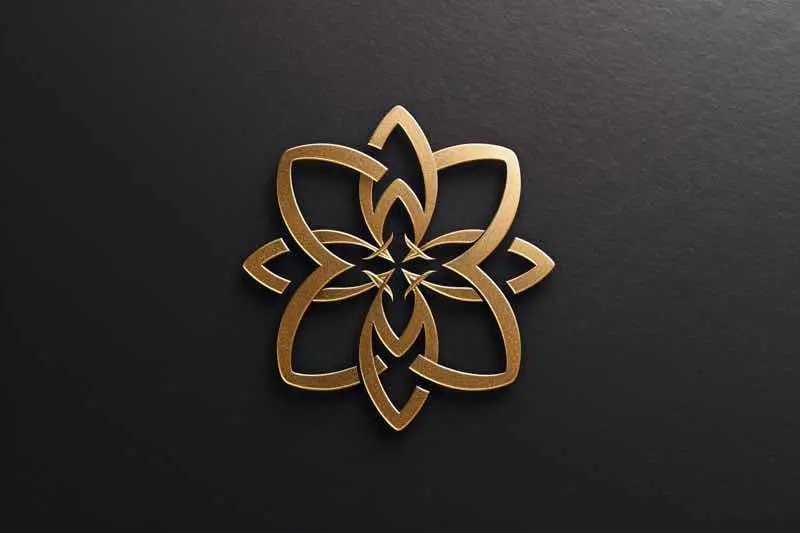Designing a good logo is crucial for the success of your business. A well-designed logo can create a lasting impression, build brand recognition, and differentiate your business from competitors. It also has a psychological impact, evoking emotions, conveying meaning, and reflecting the personality of your brand.
However, there are logo design mistakes to avoid, such as overcomplicating the design, ignoring scalability and versatility, and lacking originality. On the other hand, a well-designed logo can enhance credibility and professionalism, attract the right target audience, and increase brand loyalty.
Table of Contents
ToggleKey Takeaways
- A good logo is a lasting impression and brand recognition.
- Colors, shapes, and typography in a good logo is crucial to evoke emotions and convey meaning.
- Avoid logo design mistakes like overcomplicating the design and lacking originality.
- A well-designed logo enhances credibility, attracts the right audience, and increases brand loyalty.
- Consider hiring a professional or designing the logo yourself, keeping scalability and versatility in mind.
Good Logo is Memorable

Creating a Lasting Impression
Your good logo is the first thing that your target audience sees, and it has the power to make a lasting, strong first impression. A well-designed logo becomes a memorable part of your brand’s visual communication, helping you stand out from the crowd. But it’s not just about aesthetics.
Your good logo is a crucial role in developing consistency in your brand’s visual communication. From the colors to the font to the size and visual elements, your logo sets the tone for all your branding materials. It’s the starting point for maintaining a cohesive and recognizable brand identity. So, invest time and effort in getting your logo right, because it’s the face of your brand and the key to making a great first impression.
To make a lasting impression with your logo, consider the following:
- Colors: Choose colors that evoke the right emotions and align with your brand’s personality. Vibrant colors can denote excitement, while calming colors can evoke trust and reliability.
- Typography: Select fonts that reflect your brand’s personality and convey the right message. The right typography can enhance the impact of your logo.
- Visual Elements: Incorporate visual elements that convey meaning and resonate with your target audience. Symbols and shapes can communicate messages without using words.
Remember, a good logo is more than just a design. It’s a powerful tool that can attract your target audience, enhance your brand’s credibility, and foster brand loyalty. So, make sure your logo leaves a lasting impression!
Building Brand Recognition
A good logo is a brand’s face. Building brand recognition is essential for the success of your business. It allows you to establish a unique identity in the market and stand out from your competitors. A strong brand resonates with customers, fostering trust, loyalty, and preference. It becomes a beacon of reliability, consistently delivering on its promise. But how can you effectively build brand recognition? Here are some key strategies:
- Consistent Visual Identity: Create a visually appealing logo that represents your brand’s personality. Use a color palette that reflects your brand and choose fonts that align with your message. Consistency is key in building brand recognition.
- Engaging Content: Develop compelling and relevant content that resonates with your target audience. Use storytelling techniques to convey your brand’s values and create an emotional connection with consumers.
- Social Media Presence: Leverage the power of social media platforms to reach a wider audience. Regularly post engaging content, interact with your followers, and build a community around your brand.
- Influencer Partnerships: Collaborate with influencers who align with your brand values and have a strong following. Their endorsement can help increase brand visibility and credibility.
- Customer Experience: Provide exceptional customer service and create a positive experience at every touchpoint. Happy customers are more likely to recommend your brand to others, contributing to brand recognition.
Building brand recognition takes time and effort, but the benefits are worth it. By establishing a strong brand identity and implementing effective strategies, you can differentiate yourself from competitors and create a lasting impression in the minds of consumers.
Differentiating from Competitors
A good logo is unique. When it comes to standing out from the competition, your logo plays a crucial role. It’s like the superhero cape that sets you apart from the crowd. But how can you ensure that your good logo is standing out? Here are a few tips:
- Be Unique: Your logo should be one-of-a-kind, like a fingerprint for your brand. Avoid any resemblance to other logos in the industry, as it could weaken your brand identity. Embrace your uniqueness and let your logo showcase the distinctiveness of your products or services.
- Connect Emotionally: Your logo should do more than just look good; it should connect with people on an emotional level. Whether it conveys intelligence, dedication, or other specific emotions, make sure your logo speaks to your target audience’s hearts.
- Versatility is Key: Your logo should be versatile and adaptable. It should be able to scale in various sizes and shapes, making it suitable for different mediums and platforms. From billboards to social media profiles, your logo should shine wherever it’s displayed.
Remember, a well-designed logo is your secret weapon in the battle for brand supremacy. So, suit up and let your logo save the day!
Good Logo is Psychologically Effective

Colors that Evoke Emotions
A good logo is touching. Colors in branding and graphic design have a significant impact on brand identity and perception. Understanding color psychology allows designers to make intentional choices that evoke desired emotions. Consistency in branding elements helps establish a recognizable identity. Color associations, combinations, and contrast are important considerations in graphic design. Different industries and target audiences may have different color preferences and associations.
Shapes and Symbols that Convey Meaning
A good logo is meaningful. Shapes have their own language, conveying meaning, evoking emotions, and making a visual impact. Just like colors, shapes play a crucial role in creating a strong brand identity. They help differentiate your brand, symbolically represent your values, forge emotional connections, and ensure consistency across various touchpoints.
Here are some key points to consider when using shapes and symbols in your logo:
- Curved and organic shapes can create a sense of comfort, warmth, and approachability, while sharp and angular shapes may evoke a sense of excitement, energy, or precision.
- Incorporate shapes that align with your brand’s personality and values to reinforce your message.
- Ensure that the shapes you use are versatile and can be scaled to different sizes and mediums.
Remember, it’s not just about the shapes within your logo; it extends to the shapes you incorporate in your web page backgrounds, layout design, packaging, and even your business cards and stationery.
As the saying goes, ‘Shape up your logo, shape up your brand!’
Typography that Reflects Personality
A good logo is humanized. The typeface you choose for your logo can carry significant meaning. Whether it is Serif, Sans-Serif, Script, or Decorative, you need to comprehend the psychology behind these fonts and utilize the ones that align with your brand voice. Each font style evokes a different emotion and can convey a unique personality.
Serif fonts exude a sense of tradition and elegance, while Sans-Serif fonts portray a modern and clean aesthetic. Script fonts add a touch of sophistication and creativity, while Decorative fonts make a bold statement and capture attention. Consider your brand’s personality and message when selecting the typography for your logo design.
To further enhance your understanding of typography, here are some key points to keep in mind:
- Font Consistency: Ensure that the font you choose is consistent across all brand materials to maintain a cohesive and professional look.
- Legibility: Prioritize legibility to ensure that your logo is easily readable in various sizes and formats.
- Font Pairing: If you decide to use multiple fonts in your logo, make sure they complement each other and create a harmonious visual balance.
Remember, the typography you choose for your logo is an essential element in conveying your brand’s personality and making a memorable impression.
Good Logo Design Mistakes to Avoid

Overcomplicating the Design
When it comes to good logo design, simplicity is key. A good logo is simple. Overcomplicating the design can lead to confusion and a lack of clarity in conveying your brand message. A cluttered logo can also be visually overwhelming and difficult to remember. Remember, less is more when it comes to logo design. Keep it clean, minimal, and focused on the core elements that represent your brand.
Ignoring Scalability and Versatility
When it comes to logo design, ignoring scalability and versatility is like wearing a fabulous outfit that only fits you in one specific pose. Sure, it might look great in that one pose, but what happens when you need to move, bend, or stretch?
A good logo is adaptable. Your logo should be able to adapt to different sizes and mediums without losing its impact. It should be like a chameleon, seamlessly blending into any environment while still standing out. By neglecting scalability and versatility, you risk limiting the potential reach and effectiveness of your logo.
Lack of Originality
When it comes to logo design, originality is key. Lack of Originality is one of the biggest mistakes you can make. A good logo is original. Your logo should be unique and stand apart from other logos in the industry. If your logo closely resembles another, it could weaken your brand identity and make it difficult for customers to differentiate you from your competitors.
Your good logo is the uniqueness of your business and showcase the distinctiveness of your products or services. It’s an opportunity to highlight the specialty of your business and make a lasting impression.
The Impact of a Good Logo

Enhancing Credibility and Professionalism
A good logo is credible. Having a well-designed logo not only enhances the visual appeal of your brand, but it also plays a crucial role in establishing credibility and professionalism. A logo that is thoughtfully crafted and visually appealing creates a positive impression on potential customers, making them more likely to trust your business. It shows that you pay attention to detail and have invested time and effort into creating a strong brand identity.
In addition, a well-designed logo sets you apart from your competitors and helps you stand out in a crowded market. It gives your business a unique identity and makes it easier for customers to recognize and remember your brand. By differentiating yourself from the competition, you can attract the attention of your target audience and increase brand awareness.
To summarize, a well-designed logo not only enhances the visual appeal of your brand but also establishes credibility, professionalism, and differentiation. It creates a positive impression, builds trust, and helps your business stand out in the market. Invest in a logo that reflects your brand’s values and personality, and reap the benefits of a strong and memorable brand identity.
Attracting the Right Target Audience
When it comes to attracting the right target audience, your logo plays a crucial role. It acts as a magnet, drawing in potential customers who resonate with your brand’s values and personality. But how can you ensure that your logo is effective in attracting the right audience? Here are a few key strategies:
- Simplicity: Keep your logo design simple and clean. A cluttered or overly complicated logo can confuse and turn away potential customers.
- Relevance: Make sure your logo reflects your brand’s identity and resonates with your target audience. It should communicate who you are and what you stand for.
- Distinctiveness: Stand out from the competition by creating a logo that is unique and memorable. A distinctive logo will catch the attention of your target audience and make your brand more memorable.
Remember, your logo is the first impression that potential customers have of your brand. Make it count!
Increasing Brand Loyalty
Increasing brand loyalty is essential for the long-term success of any business. When customers feel a strong connection to a brand, they are more likely to become repeat customers and advocates for the brand. Here are some strategies to help increase brand loyalty:
- Provide exceptional customer service: Going above and beyond to meet customer needs and expectations can leave a lasting impression and build trust.
- Offer personalized experiences: Tailoring products or services to individual customer preferences shows that you value their unique needs.
- Create a loyalty program: Rewarding customers for their continued support and engagement can incentivize loyalty and encourage repeat purchases.
- Foster a sense of community: Building a community around your brand where customers can connect with each other and share their experiences can create a sense of belonging and strengthen loyalty.
- Continuously innovate: Keeping your brand fresh and relevant by introducing new products, services, or experiences can keep customers engaged and excited.
By implementing these strategies, you can cultivate a loyal customer base that not only supports your business but also becomes brand ambassadors, spreading positive word-of-mouth and attracting new customers.
A well-designed logo can have a significant impact on a business. It serves as the visual representation of a brand and can help create a strong and memorable identity. A good logo is visually appealing and effectively communicates the values and message of a business can attract the attention of potential customers and differentiate it from competitors. It can also instill trust and credibility in the minds of consumers, as a professional and well-designed logo reflects the professionalism and quality of the business.
At CWORKS, we understand the importance of a well-designed logo and its impact on your business success. Our team of experienced designers can create a logo that captures the essence of your brand and resonates with your target audience. Contact us now through our contact page to discuss your business needs and achieve remarkable success together with CWORKS. Let’s get started!
In Conclusion
Designing a logo for your small business is a crucial task that can make or break your brand’s success. A well-designed logo not only represents your brand effectively but also helps in creating a memorable brand identity. It attracts attention, makes a strong first impression, and fosters brand loyalty.
Additionally, a good logo is consistent in visual communication and help your business stand out from the crowd. So, dive deep into your brand’s personality, understand your target audience, and create a logo that is unique, versatile, and scalable. Remember, a good logo is the face of your brand and can pave the way for your business’s success.
FAQs
Why is having a good logo important for a business?
A good logo is important for a business because it creates a memorable brand identity, helps in building brand recognition, and differentiates the business from competitors.
What role does color play in logo design?
Colors in logo design evoke emotions and can convey meaning. Each color has a specific implication and can bring variation to the message the logo wants to communicate.
Why is simplicity important in logo design?
A good logo is simple. Simplicity is important in logo design because it makes the logo easier to remember and understand. Complex logos with too many elements can be difficult for customers to recall.
Why should a logo be versatile and scalable?
A good logo is versatile and scalable to be displayed on different mediums and sizes. It should maintain its integrity and look good whether it’s on a billboard or a small social media avatar.
What are some common logo design mistakes to avoid?
Some common logo design mistakes to avoid include overcomplicating the design, ignoring scalability and versatility, and lack of originality.
How does a well-designed logo impact a business?
A well-designed logo enhances credibility and professionalism, attracts the right target audience, and increases brand loyalty.








































































































